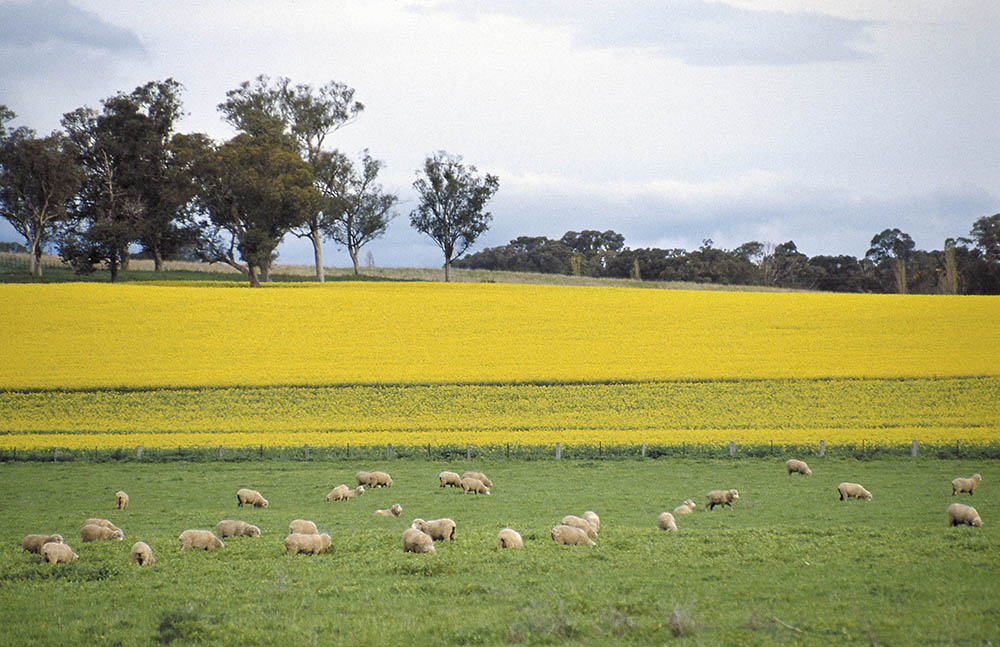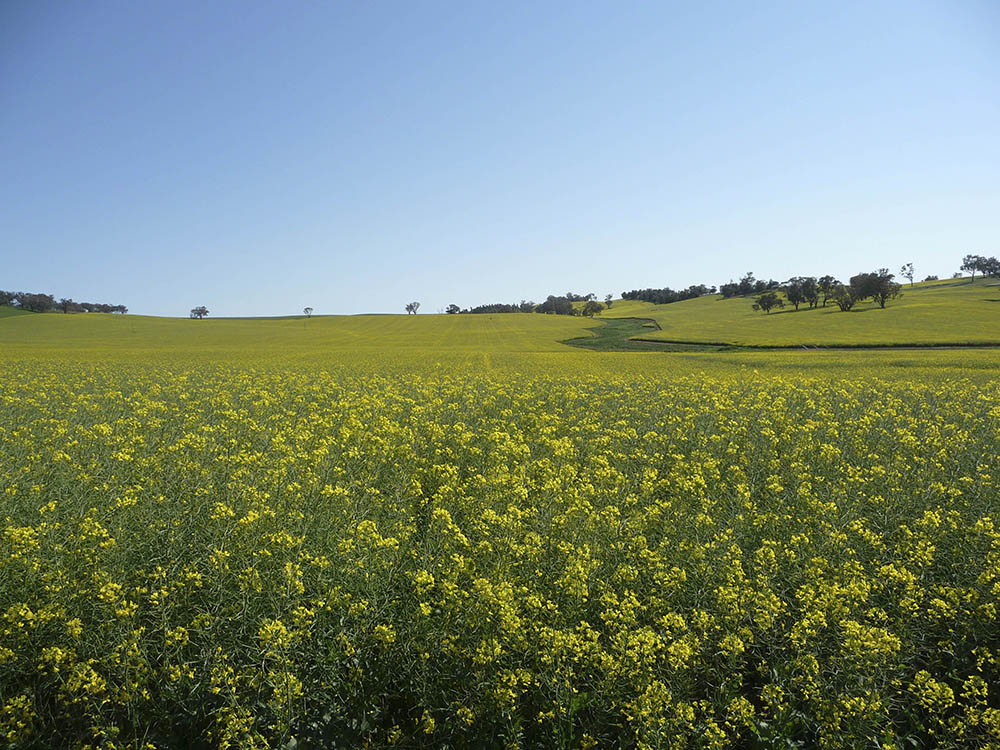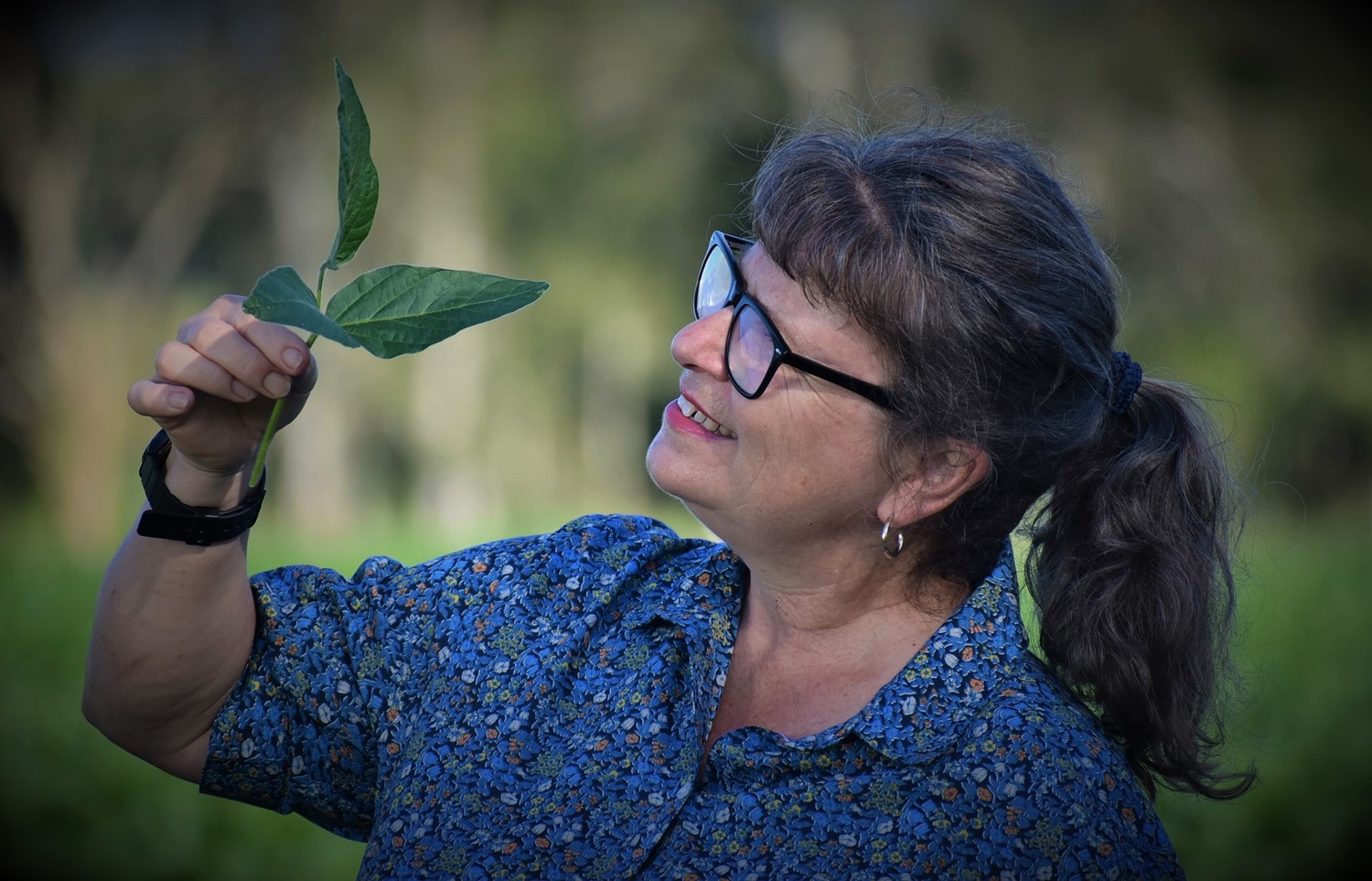- GVP $1,568 million est. Up 70% year-on-year.
- Production increased significantly supported by an increase in plantings and record high yields for canola.
- Prices also reached record highs and combined with high production meant NSW GVP from oilseeds exceeded the previous record high by a significant margin.
Production
Yields for most oilseeds remained close to record levels, especially for canola.
As a result, overall production was up 41% year-on-year and 65% above the 10-year average. The standout was canola with record high production, up 17% year-on-year and 75% above the 10-year average. 201
NSW area planted to oilseeds ('000 Ha) 201
- Canola
- Cottonseed
- Soybeans
- Sunflower
- 10 year average
NSW Oilseed Production ('000 tonnes) 201
- Canola
- Cottonseed
- Soybeans
- Sunflower
- 10 year average
Price
Canola prices have been elevated since late 2020-21 primarily due to drought in Canada which has significantly impacted production. Canada is typically responsible for 60% of global exports of canola/rapeseed. The Russian invasion of the Ukraine (responsible for another 10% to 20% of exports) further impacted global supply. Whilst prices in Australia were excellent and well above average, domestic prices were below global averages as exporters struggled to move a record grain harvest through ports. Comparative international prices are also inflated by domestic factors in other producer countries, especially Canada. Canada has a large canola processing sector which needed to compete for significantly reduced supply as a result of drought.
Canola price (Delivered Port Kembla, $AUD per tonne) 245
- Canola - Port Kembla
- 5 year average price
Canola delivered Port Kembla vs canola delivered FOB, Saskatchewan Canada 245 101
- Basis - Cash Port Kembla to ICE Futures
Trade
Australian exports of canola (primarily from Western Australia) also surged 170% to a record high of $4.9 billion. 35 With domestic crushers increasing capacity to handle the record crop, exports of canola oil also increased. Whilst information on state level exports of canola oil are restricted, national exports increased 32% to $372 million. 35 DPI estimates that 35% to 40% of these exports are from NSW. NSW cottonseed exports also rebounded strongly to $38 million in 2020-21 35 in line with the 10-year average.
NSW Oilseed exports by destination ($'million) 35
- European Union
- Asia
- Middle East
- Americas
- Other
Macroeconomic Conditions

Outlook

Stronger Primary Industries Strategy
First soybean variety for NSW with resistance to soybean leaf rust
Soybean growers will benefit from the first soybean variety bred for NSW with resistance to soybean leaf rust (Phakopsora pachyrhizi), boosting grower’s productivity and profitability.
Strategic Outcome


A 2019 analysis, based on an edible grain price of $700 per tonne and a severe rust event occurring once every four seasons, estimated that the income benefit for soybean growers in choosing a rust resistant variety is worth around $2,500 per hectare.
Breeding and evaluating varieties of soybean to suit the wide variety of climates and farming systems in Australia is the focus of the Australian National Soybean Breeding Program, a collaboration between NSW Department of Primary Industries (DPI), CSIRO and Grains Research and Development Corporation.
The new variety, released in early 2022 named ‘Gwydir’ is high yielding, rust resistant and has improved weathering tolerance, providing greater crop security.


